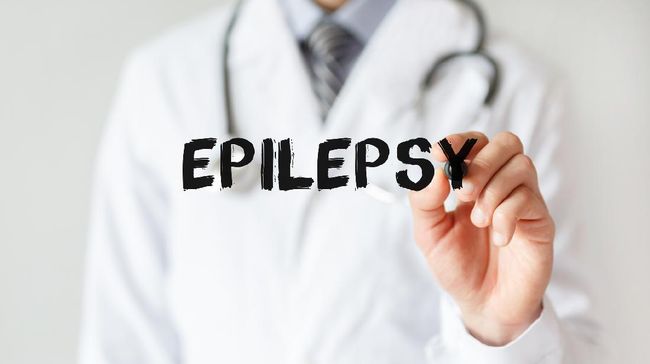Epilepsy or in layman’s language called epilepsy is a condition of central nervous system disorders. It is very important to recognize the symptoms of epilepsy so that it can be followed up quickly and appropriately.
Epilepsy is a condition in which abnormal brain activity results in seizures or unusual behavior or sensations and sometimes loss of consciousness.
Symptoms of epilepsy
Seizures are the main symptom of epilepsy. However, the symptoms will be different in each patient seen from the type of seizure.
Focal (partial) seizures
There are two types of seizures, namely focal conscious seizures and focal unconscious seizures.
Focal conscious seizures do not involve loss of consciousness. As quoted from Healthline, the symptoms of epilepsy with focal seizures include:
1. Changes in the senses of taste, smell, sight, hearing, or touch.
2. Dizzy head
3. Tingling and wrinkles on the limbs
Focal unconscious seizures include loss of consciousness or fainting. Then other symptoms such as the following:
1. Empty eyes
2. Unresponsive
3. Doing repetitive movements
Generalized seizures
Symptoms of epilepsy in the form of generalized seizures involve all areas of the brain. As quoted from the Mayo Clinic, there are six types of generalized seizures.
1. Absence seizures
Usually occurs in children. Characteristically the patient looks up with or without body movement, for example, winking or pursed lips.
2.Tonic seizures (tonic seizures)
Characteristics of stiff muscles and can affect consciousness. Muscle areas affected include the back, arms and legs.
3. Atonic seizures (atonic seizures)
This epilepsy symptom causes the patient to lose muscle control. The patient may suddenly fall or faint.
4. Clonic seizures (clonic seizures)
Seizures are associated with repetitive or rhythmic jerking muscle movements. Affected areas of the body such as neck, face and arms.
5. Myoclonic seizures (myoclonic seizures)
The sensation is a brief, sudden jerk or twitch affecting the upper body, arms and legs.
6. Tonic-clonic seizures (tonic-clonic seizures)
This is the most dramatic symptom of epilepsy. The patient may lose consciousness suddenly, the body stiffens, twitches and vibrates. This type of seizure sometimes causes the patient to lose bladder control or bite the tongue.
What can be done?
Most seizures do not require emergency medical treatment. When a seizure lasts, you cannot stop it.
However, if you find someone with epilepsy symptoms in the form of seizures, take the following actions:
1. Stay with the person until the seizure goes away. When the person wakes up, take them to a safe place and tell them what happened.
2. Keep calm and try to calm him down.
Then if the person has a tonic-clonic seizure with uncontrollable shaking or jerking, do:
1. Leave the person on the ground or floor.
2. Turn her body gently to the side to make it easier for her to breathe.
3. Keep dangerous objects away.
4. Put something under the head as a pad.
5. If you wear glasses, you should remove them.
6. Loosen clothing or accessories that affect breathing.
7. Call medical personnel if the seizure lasts more than five minutes.
It is very important to never:
1. Resists the movement of the convulsing person.
2. Put anything in the mouth including spoons.
3. Offer food or drink when the seizure person is not fully awake.
Stay alert and also observe the symptoms of epilepsy that appear to get treatment immediately.
(chs)
–


